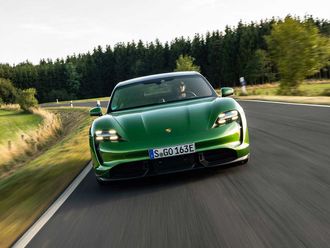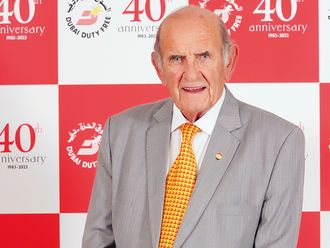Star Wars once had a rich, painstakingly produced canon beyond its three original movies. Hundreds of authors, artists, and game developers drew from the stories told by creator George Lucas, crafting what would be called the Expanded Universe.
For decades, they wrote books about the main characters’ descendants, side stories about bounty hunters and the evil Sith, and deep dives into the affairs of the Galactic Empire. Then Disney tore it all down.
Disney decided to set aside the Expanded Universe in 2014 because it wanted a clean slate for its writers and directors as they created new chapters of the space saga, such as 2015’s ‘Star Wars Episode VII: The Force Awakens’. The old stories were designated as “Legends”, myths that aren’t a part of the official Star Wars timeline.
Star Wars has the ability to generate legions of furrowed brows over its fictional intricacies, given its place inside American popular culture. But all of this hyper geekdom is also very, very big business. So the canon, as the faithful call it, must be rebuilt.
The movies are the gleaming centrepiece of Disney’s reconstruction effort, and it all begins with ‘Rogue One: A Star Wars Story’. The film tells the tale of rebel recruit Jyn Erso, played by Felicity Jones, and a team tasked with stealing the Death Star plans from the evil Empire in order to save the galaxy. A Han Solo film about the smuggler’s origins is also in the works, and is set to be released in 2018.
These two new movies are meant to fit around and between the timelines of chronological “episodes”, the fourth of which, ‘Star Wars: A New Hope’, was the first to be released back in 1977. The seventh episode of this series was last year’s ‘The Force Awakens’, and the eighth episode is scheduled for 2017. Yes, the first six episodes have all been released, but out of order.
Now back to the canon and Rogue One. At the premiere, there was no question that the Expanded Universe from which these new movies come had a lot of wizened experts on hand. Vincent Cortez, 30, who serves in the Air Force, and his wife Megan, 29, wore helmets and jackets bearing the insignia of their fan club, the Mandalorian Mercs. The Mandalorians became popular because of the armour worn by the bounty hunter Boba Fett, who first appeared in the second Star Wars film but whose mythology has grown over the years in novels and comics.
“Nobody mines their properties better than this company,” Geetha Ranganathan, a media analyst at Bloomberg Intellegence, said of Disney. She pointed at the company’s work weaving together Marvel’s ever-growing universe, and the years-long milking of its Frozen franchise, which includes a spin-off animated short film and even an ice show. Now Disney is pouring “a substantial amount of capital” into constructing Star Wars sections at its theme parks in Florida and California, CEO Bob Iger said in March.
But beyond just churning out Star Wars films, there’s much more to be done if Disney wants to retain the lustre of the epic’s limitless yet integrated world, itself based on stories 40 years in the making. Writers who contributed to the original Expanded Universe concocted deep new narratives during the time of the main Star Wars tale, taking film characters dozens of years into the future while creating new ones. An abundance of tertiary tales filled out the firmament, like short stories about the galaxy’s various bounty hunters, or video games about Darth Vader’s secret apprentice.
One novel, controversially, even killed off everyone’s favourite Wookiee, Chewbacca.
Since the reset, Disney has released dozens of new books to populate the ‘Star Wars’ canon. Many are part of multi-platform revenue pushes that provide more layers to existing properties. Take ‘Star Wars Rebels’, an animated television series about fledgling revolutionaries during the rise of the Empire and broadcast on the Disney XD network.
The franchise actually debuted in the form of the first new canon novel, John Jackson Miller’s ‘Star Wars: A New Dawn’, and made its television premiere as ‘Star Wars Rebels: Spark of Rebellion’, a 44-minute movie on the Disney Channel. Ten days later, the show’s first episode aired on XD.
But many of the new books also follow the old Expanded Universe formula, filling gaps in the main storyline or looking into secondary characters that drew fan intrigue. A trilogy dubbed “Aftermath” is part of a 20-title effort to address the gap between ‘Return of the Jedi’, the sixth episode of the primary films, and ‘The Force Awakens’, the seventh.
The Disney version of the Expanded Universe uses what the company called a “unified storytelling approach” that promised more collaboration between everyone involved. Creative development falls under the purview of a single “story group”. A Del Rey Books executive has said the publisher was excited to “finally be able to call our upcoming novels true canon.”
Most of the new books have been published in-house by Disney or Del Rey, a subsidiary of Penguin Random House that specialises in science fiction and fantasy.
The ‘Star Wars’ canon is more closely guarded than it was when Lucasfilm was still independent, prior to Disney’s acquisition of the studio in 2012. Back then, contributors to the Expanded Universe would deal with Lucasfilm’s licensing group, a particularly hands-on team within the studio, said Bill Slavicsek, a veteran writer who worked on dozens of ‘Star Wars’ projects from 1986 to 2009. If you had a question for Lucas himself, it’d usually have to be a yes-or-no, due to the filmmaker’s busy schedule, he said.
Still, the legions of storytellers provided remarkable depth to Lucas’s distant galaxy. For instance, one of Slavicsek’s earliest ‘Star Wars’ undertakings was a source book that added details to the little unexplained things you saw in the movies. In the first film, Luke Skywalker and Obi-Wan Kenobi venture into a cantina full of non-humans that you see for just a second. One of them had a hammerhead-shaped cranium, so people started calling it a hammerhead.
“That’s not a good name,” said Slavicsek. “That’s an insult. You don’t call a species a hammerhead, so I came up with the name Ithorians. I gave them a name and told you what their world is about.”
That level of detail isn’t easily replicated. There are more than 100,000 articles on Wookieepedia — a giant online Star Wars encyclopedia — that address non-canonical Legends content, according to FiveThirtyEight. Only about 10,000 refer to actual, Disney-sanctioned canon.
For now, all eyes are on Rogue One and the new canon material that comes with it. The success of the original Expanded Universe has shown that fans are interested in all sorts of Star Wars adventures, but this will be its first test on the big screen.
Despite the franchise’s long-standing appeal, success is not guaranteed — some of the later Star Wars films made by Lucas fell flat with many fans. Only time will tell if the Force will be with Disney.












